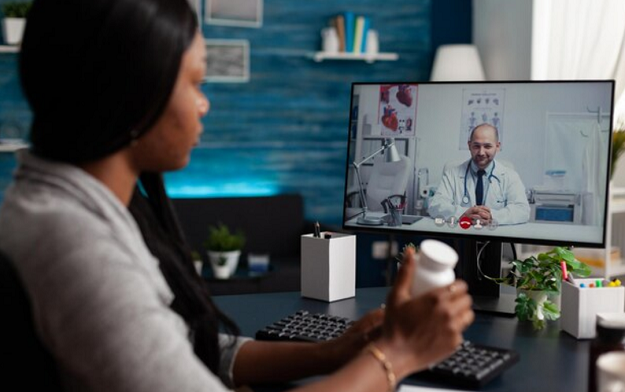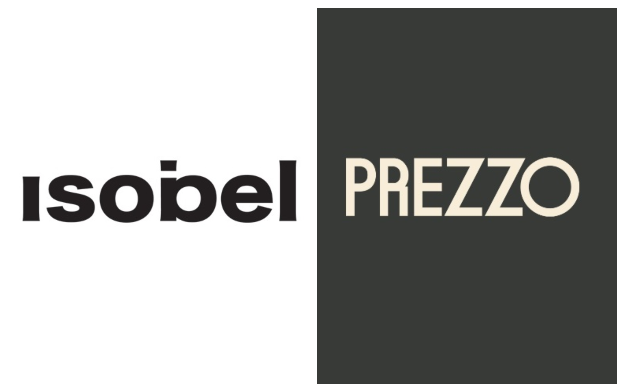
Zoom Crafts the Future of Healthcare Collaboration, Brand Says
Mar. 18, 2024
During the last few years, the healthcare industry has witnessed many great changes through the revolution in technology that influences the future of the field, of healthcare collaboration. One form of technology that ends up being a game changer in the way medical workers talk and cooperate is Zoom. With Zoom being the leading video conferencing platform, it's now inevitable for healthcare organizations to work with it, helping to ensure that quality patient care is improved and operational efficiency is documented.
Here, we will focus on how Zoom is creating a future of healthcare collaboration where healthcare professionals can communicate in a readable and swift way through Zoom’s platform. In this section, we will be focusing on the various features and benefits of Zoom that make it the key choice for healthcare organizations with its easy-to-use interface that is simple for anyone to get familiar with and the strong security measures.
Moreover, live-patient cases demonstrating how medical practitioners have employed Zoom for greater patient care and more efficient care management and innovative initiatives in general healthcare delivery become the next topic. Zoom has enabled an effective communication channel amongst healthcare professionals and this significantly enhanced remote working. It has consequently led to the creation of a more effective work environment and hence, patients' health improves.
Let us show the innovative future of healthcare collaboration and the digital full delivery of care in the age of Zoom.
-
Zoom's impact on healthcare collaboration
The COVID-19 crisis caused a significant growth in the use of telehealth and virtual care systems, thus the usage of Zoom has become increasingly inevitable in the medical sector. Through online video conferencing, remote medical consultations, and securely exchanging data and patient records, Zoom has become a digital era of revolution by changing the way medics work, come together, and take care of their patients.
Creating a culture of collaboration
At the personnel level, healthcare businesses face several issues, including shortages of skilled workers, staff fatigue, and retention concerns, all influencing the growing demand for healthcare. Based on a Forrester Total Economic Impact analysis from 2022, adopting the Zoom One for Healthcare solution increased productivity by more than 50 minutes per week per person.
Zoom One for Healthcare plans differ, but important communication capabilities might include:
- Meetings. High-quality, dependable video conferencing for use in healthcare personnel and staff conferences.
- Team Chat allows medical professionals to communicate in real-time via chat, with secured sharing of data, search, and other performance advantages.
- AI Companion creates meeting recaps and other AI-powered features.
- Phone. Enables audio interaction within and between healthcare facilities, physician offices, or in the field. However, not looking at the indisputable Zoom benefits, it is impossible not to mention the importance of local numbers, as it enhances the local presence of a business and gives the company an image of being easily attainable to its customers.
- Rooms. Offer a seamless patient or conference room experience through a software-driven system that includes audio and video conferencing, and wifi screen sharing.
- Webinars are online meetings that bring colleagues together for onboarding, training in medicine, healthcare lectures, and work-related events.
- Workspace reservation. Rooms are reserved for inter- and multi-disciplinary collaboration, patient involvement, planning sessions, and other activities.
Improving the patient journey
Whether the patient journey is virtual or in-person, Zoom provides solutions to help you tailor and enhance the whole patient experience.
Zoom Contact Center enables healthcare businesses to give patients a range of communication options, including video, audio, online chat, and SMS, allowing patients to conveniently receive answers and support via their preferred channel.
Zoom Rooms may be utilized to enhance the in-room patient experience by integrating cutting-edge technology from medical equipment and digital systems. Smart TVs and telehealth carts equipped with Zoom Rooms technology may be added to patient rooms, allowing physicians to perform virtual rounds, specialists to conduct remote consultations, and assistants to assist with check-in or discharge.
-
Benefits of using Zoom for healthcare collaboration
Zoom being the game-changer for the healthcare service industry has provided a range of benefits in terms of collaboration among healthcare professionals.
An important benefit of Zooming via healthcare collaboration is that it brings these elements as well: convenience and flexibility. Healthcare practitioners can make instant touch with each other over a distance, and it becomes easy for them to share information between them and cooperate effectively.
Another advantage of Zoom for medical collaboration is its cost-effectiveness. This way, the cost of transportation, accommodation, and logistics is reduced by eliminating the need to travel as well as staying in meetings too long. It not only maximizes available resources but also directs all the healthcare teams toward optimal efficiency and productivity.
Out of simple conferencing, the software incorporates video and audio styles of the highest quality making communication personal and meaningful, where doctors can undertake virtual consultations; discuss with patients or even work on research projects. Additionally, a screen-sharing option provided in this platform allows the dissemination of medical images, test reports, and other useful documents which enhances decision-making quality in care management.
Additionally, Zoom’s secure platform ensures that healthcare practitioners confidently disclose secret patient data during virtual consultations without endangering privacy breaches. Among other things, Zoom may be fitted with end-to-end encryption and meet HIPAA regulatory standards so there would no longer be any worries about privacy or confidentiality concerns from healthcare organizations.
The advantages of Zoom health collaboration are numerous since it improves communication, saves costs, boosts productivity, and has a safe data transmission process. With healthcare providers more and more opting for digital collaboration solutions, Zoom has emerged as a dependable solution with demonstrated efficacy in facilitating teamwork among professionals and enabling them to provide quality patient care.
-
Case studies of successful collaborations using Zoom in healthcare
As a driver that bridges gaps and disrupts domains, Zoom empowers healthcare collaboration amid technological overhaul. Let’s delve into real-world case studies that showcase successful partnerships between health systems, physician practices, and digital health companies, all facilitated by Zoom. Let’s delve into real-world case studies that showcase successful partnerships between health systems, physician practices, and digital health companies, facilitated by Zoom.

Atrium Health: Revolutionizing Hospital at Home (AH-HaH) Program
Challenge: Technology application to delivery from healthcare for revolution.
Solution: AH-HaH was a telehealth service jointly owned by Atrium Health and a technology company. Integrating rigorous care suited for the 21st century clinical which combines in-person and virtual consultation, virtual monitoring, and simple data flow within electronic health records has become the new trend.
Impact: The quality of care, better patient outcomes, and lower hospital costs are highly possible through telemedicine delivery.
Concert Health: Integrating behavioral health with primary care
Challenge: In this case, promoting movement to evidence-based behavioral health care.
Solution: Concert Health, chiefly a virtual behavioral health medical group, chose a Collaborative Care Model (CoCM) to engage in involved recuperation maintenance. Integrating behavioral health with primary care helped to boost clinical outcomes while patients and healthcare professionals experienced a cross-disciplinary care trial.
Impact: The aim of this program is, among others, to provide patients with better mental health services and to engage doctors in more responsive communication.
Ochsner Health: Advancing maternal health with connected maternity online monitoring (MOM)
Challenge: Together we can make a difference in maternal health outcomes.
Solution: Ochsner system initiated the MOM program shortly after remote patient monitoring and digital devices were deployed. Visits to offices were minimized or replaced by transactions via mobile phones or the Internet which resulted in better safety and more convenience.
Impact: Promoting good health for here giving women of Louisiana and Mississippi.
Omada Health: Transforming chronic care management
Challenge: Attaining a good quality of life while managing chronic conditions efficiently.
Solution: Omada Health, a digital health organization providing evidence-based solutions in the field of virtual care, offers extra services to patients. To achieve their goal, attempt to use various strategies such as data tech-associated humans, connect devices, and strategic, effective partnerships with health organization providers.
Impact: Improved chronic disease treatment and an increase in the number of people who recover from harm.
Oshi Health: Redefining GI care
Challenge: Doctors manage the requirements of GI patients through continuous and intense support.
Solution: Besides working together with current care groups, Oshi Health provides extra virtual aid between provider appointments to support conventional visits.
Impact: Improved documented patient experience and high-quality GI care.
-
Future trends in healthcare collaboration
The future trend of collaboration in healthcare will mold the marketing scheme of the industry that is facilitated by technology, evolving patient expectations, and the need for more effective and efficient care delivery.
One of the key trends roll that will shape the future of healthcare collaboration is the continued integration of telehealth and virtual solutions. The COVID-19 crisis propelled the world of telehealth forward, emphasizing the role of remote communication modality and the delivery of care with no direct contact with the patient. Healthcare organizations, in turn, do adopt telehealth tools as a means of communication with patients, interacting professionally with other medical professionals and care-providing facilities.
A new emerging healthcare collaboration trend is the utilization of artificial intelligence (AI) and machine learning to facilitate better decisions and hence better patient welfare. AI-powered tools can function at a much wider scale than humans analyzing really large volumes of data to provide insights on patient care, tracking trends and patterns as well as to support clinical decision-making. Through the application of AI technology, medical experts have an opportunity to maintain efficient teamwork, make their decisions based on facts only, and provide personalized care to patients at a higher level.
On the other end, the growing demand for interoperable health information systems and electronic health records (EHRs) is projected to drive the development of uninterrupted information and collaboration among healthcare practitioners. Interoperability means the systems can talk and understand one another, which will make all operations, the care shared, and the decisions made better, and this, in turn, will lead to the improvement of patient outcomes. As healthcare bodies intensify the need for interoperability and sharing of data, working together within the team of care workers, will be more and more proficient and unrestricted.
-
Zoom: Shaping the future of healthcare collaboration
Zoom has become the key player in redefining the future of healthcare collaboration through the creation of a strong and cooperative environment for the need for professionals to come together and collaborate. The influence on communication, patient care, research, and cost-effectiveness provided by the platform is indisputable. With the industry constantly growing, adopting advanced group tools such as Zoom will become extremely critical for healthcare institutions, if they want to achieve favorable outcomes and ensure the medications’ success
Latest News
Apr. 26, 2024
The Amazon Rainforest "Tops" Forbes' Billionaires
Move over Elon Musk, The Amazon Rainforest has made the top ranking of Forbes’ ranking of the world’s richest billionaires in a special advertising campaign
Apr. 26, 2024
Prezzo Appoint Isobel as Brand Partner
Prezzo has also appointed isobel as a lead social agency, across the brand’s social strategy and content


